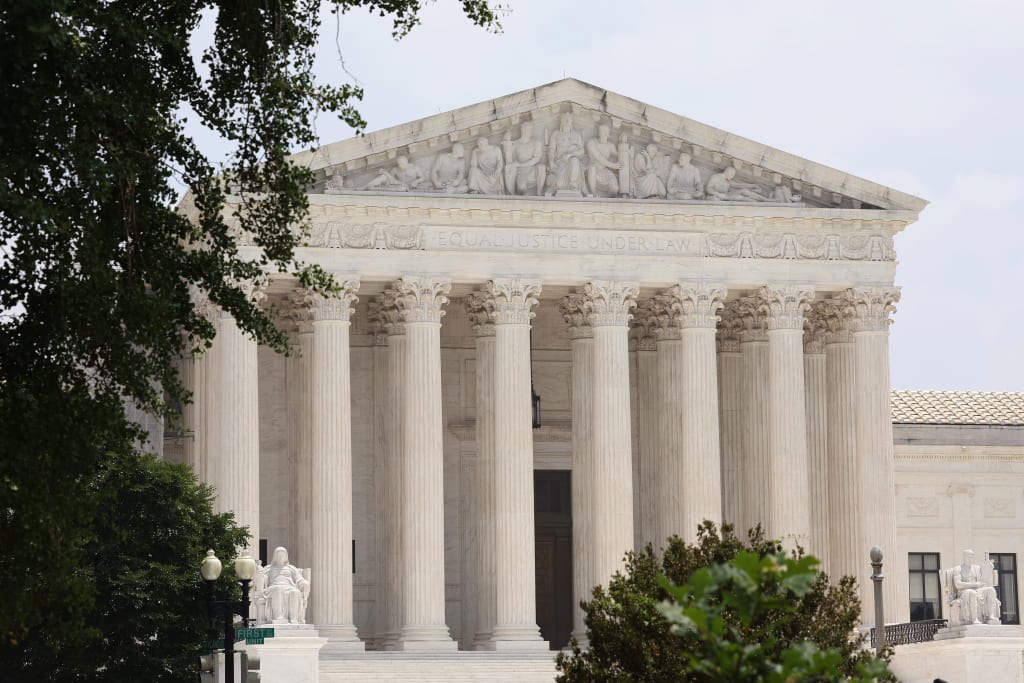Supreme Court Deals Double Whammy: Student Loan Plan Stalled, LGBTQ Protections Curtailed
The Supreme Court Strikes Down President Biden's Student Loan Forgiveness Program: What Borrowers Need to Know

Introduction
The Supreme Court's recent decision has struck down President Joe Biden's student loan forgiveness program, leaving millions of borrowers uncertain about the fate of their debt relief. The program, announced by Biden last August, faced significant legal challenges that prevented it from taking effect. In response to the ruling, the Biden administration has announced alternative measures to provide some level of debt relief to borrowers. This article aims to provide a comprehensive understanding of the situation and guide borrowers through the next steps.
Background on Biden's student loan forgiveness program
President Biden's student loan forgiveness program was intended to alleviate the burden of federal student debt for qualifying borrowers. The program proposed forgiving up to $10,000 of debt for individual borrowers earning less than $125,000 per year or $20,000 for those who received a federal Pell Grant during their college enrollment. The program, estimated to cost $400 billion, aimed to address the issue of escalating student loan debt and make higher education more accessible.
Supreme Court's decision and its consequences
The Supreme Court's decision effectively blocked the implementation of President Biden's student loan forgiveness program. The ruling came after a group of Republican-led states and conservative organizations challenged the program's legality, arguing that the executive branch lacked the authority to enact such broad debt cancellation. As a result, millions of borrowers who were anticipating debt relief will now have to explore alternative avenues to address their student loan burdens.
Biden's alternative pathway to debt relief
In response to the Supreme Court's decision, President Biden announced that his administration would pursue an alternative pathway to provide some form of student debt relief. This new approach will be based on a different law than the one associated with the now-defunct forgiveness program. However, the specific details and eligibility criteria of this pathway are yet to be disclosed. The Department of Education is expected to undertake a formal rule-making process, which typically takes several months, to implement the new debt relief measures.
Easing the transition period for borrowers
Acknowledging the challenges faced by borrowers as they prepare to resume their student loan payments, President Biden's administration has committed to implementing an "on-ramp" period. This transition period aims to assist borrowers in avoiding penalties if they miss a payment during the first 12 months after loan repayment restarts in October. By providing this grace period, the administration aims to mitigate the immediate financial burdens on borrowers as they adjust to the resumption of loan payments.
Other avenues for seeking debt relief
While the Supreme Court's decision has hindered the implementation of the student loan forgiveness program, the Biden administration has introduced other initiatives to provide relief to federal student loan borrowers. New rules, set to take effect in July, will broaden the eligibility criteria for the Public Service Loan Forgiveness program, benefiting government and nonprofit workers. Additionally, a finalized income-driven repayment plan proposal will help reduce borrowers' monthly payments and the overall amount they need to repay over time. These measures offer alternative paths to debt relief for eligible borrowers.
Resumption of student loan payments
Despite the Supreme Court's ruling on the forgiveness program, the Biden administration has made it clear that student loan payments will resume in October, as originally scheduled. Most federal student loan borrowers have been exempt from making payments since March 2020 due to the Covid-19 pandemic. Under both the Trump and Biden administrations, the subsequent extensions of the payment pause provided temporary relief to borrowers. However, the recent legislation addressing the debt ceiling has prevented further extensions.
Steps borrowers should take
As the deadline for resuming student loan payments approaches, it is crucial for borrowers to take certain steps to ensure a smooth transition:
1. Contact your student loan servicer: Reach out to your loan servicer as soon as possible to address any concerns or questions you may have regarding your loans. Many borrowers may be uncertain about the amount they owe, payment schedules, and any changes in loan servicing.
2. Explore income-driven repayment plans: If you are worried about your ability to afford monthly loan payments, investigate income-driven repayment plans. These plans calculate payments based on your income and family size. Be prepared to complete the necessary paperwork to apply for these programs.
3. Stay updated on the FSA website: Keep track of updates regarding the resumption of student loan payments by regularly checking the Federal Student Aid (FSA) website. The FSA website provides valuable information and resources for borrowers.
4. Reauthorize automatic debit: Even if you authorized automatic withdrawals before the payment pause, you will likely need to reauthorize the automatic debit from your bank account to ensure timely payments. Contact your loan servicer to confirm this process.
5. Exercise patience: Anticipate that loan servicers may experience a high volume of inquiries during this time. Be patient and persistent when trying to reach out to your servicer for assistance, as it may take multiple attempts to connect with a representative.
The Fate of the student loan forgiveness program
The Supreme Court's ruling effectively halted the implementation of President Biden's student loan forgiveness program. Despite the program's popularity and the significant number of applications received, no debt had been canceled prior to the Court's decision. The proposed program faced criticism from conservative groups and lawmakers who argued against the broad cancellation of student debt without addressing the underlying issues of college affordability and potential tuition inflation. The fate of the program remains uncertain, but the Biden administration continues to explore alternative measures for debt relief.
Eligibility criteria for debt relief
Under President Biden's student loan forgiveness proposal, individuals earning less than $125,000 annually or married couples and heads of households earning less than $250,000 a year would have been eligible for debt relief. Those who also received a federal Pell grant during their college enrollment would have been eligible for higher levels of debt forgiveness, up to $20,000. Pell grants are awarded to low-income students based on various factors such as family size, income, and college costs. The student loan forgiveness program aimed to provide relief to an estimated 20 million borrowers.
Criticisms of the Forgiveness Program
Critics of the student loan forgiveness program argue that it fails to address the root causes of escalating college costs and the burden of student debt. Concerns have been raised about the potential impact on future tuition fees, as well as the fairness of targeting debt relief solely based on income. While the program received support from some Democrats, it faced opposition from both Republican lawmakers and moderate Democrats, leading to a bill that sought to block its implementation. Although the bill passed in both the Senate and the House, President Biden vetoed it in early June.
Conclusion
The Supreme Court's decision to strike down President Biden's student loan forgiveness program has significant implications for borrowers hoping for debt relief. However, the Biden administration has outlined alternative pathways to address student loan burdens. As borrowers prepare to resume loan payments, it is essential to stay informed, communicate with loan servicers, explore available options for repayment plans, and be proactive in managing their student loan obligations. While the fate of the forgiveness program remains uncertain, borrowers should be proactive in seeking the best possible outcome for their financial well-being.
FAQs
1. Q: Will student loan payments resume in October for all borrowers?
A: Yes, the Biden administration has confirmed that student loan payments will resume in October for all federal student loan borrowers.
2. Q:What should borrowers do if they can't afford their monthly loan payments?
A: Borrowers facing financial difficulties should reach out to their loan servicers and inquire about income-driven repayment plans that adjust payments based on income and family size.
3. Q: Can borrowers still apply for loan forgiveness?
A: Yes, borrowers can still explore debt cancellation options such as the Public Service Loan Forgiveness program and borrower defense to repayment for those who were misled by for-profit colleges.
4. Q: How can borrowers stay updated on student loan repayment information?
A: Regularly checking the Federal Student Aid (FSA) website is advisable for the latest updates on student loan repayment and available resources.
5. Q: Will the Biden administration propose new legislation to address student loan debt?
A: The Biden administration is pursuing alternative measures for debt relief, but the specifics and potential legislative actions are yet to be revealed.





Comments
There are no comments for this story
Be the first to respond and start the conversation.